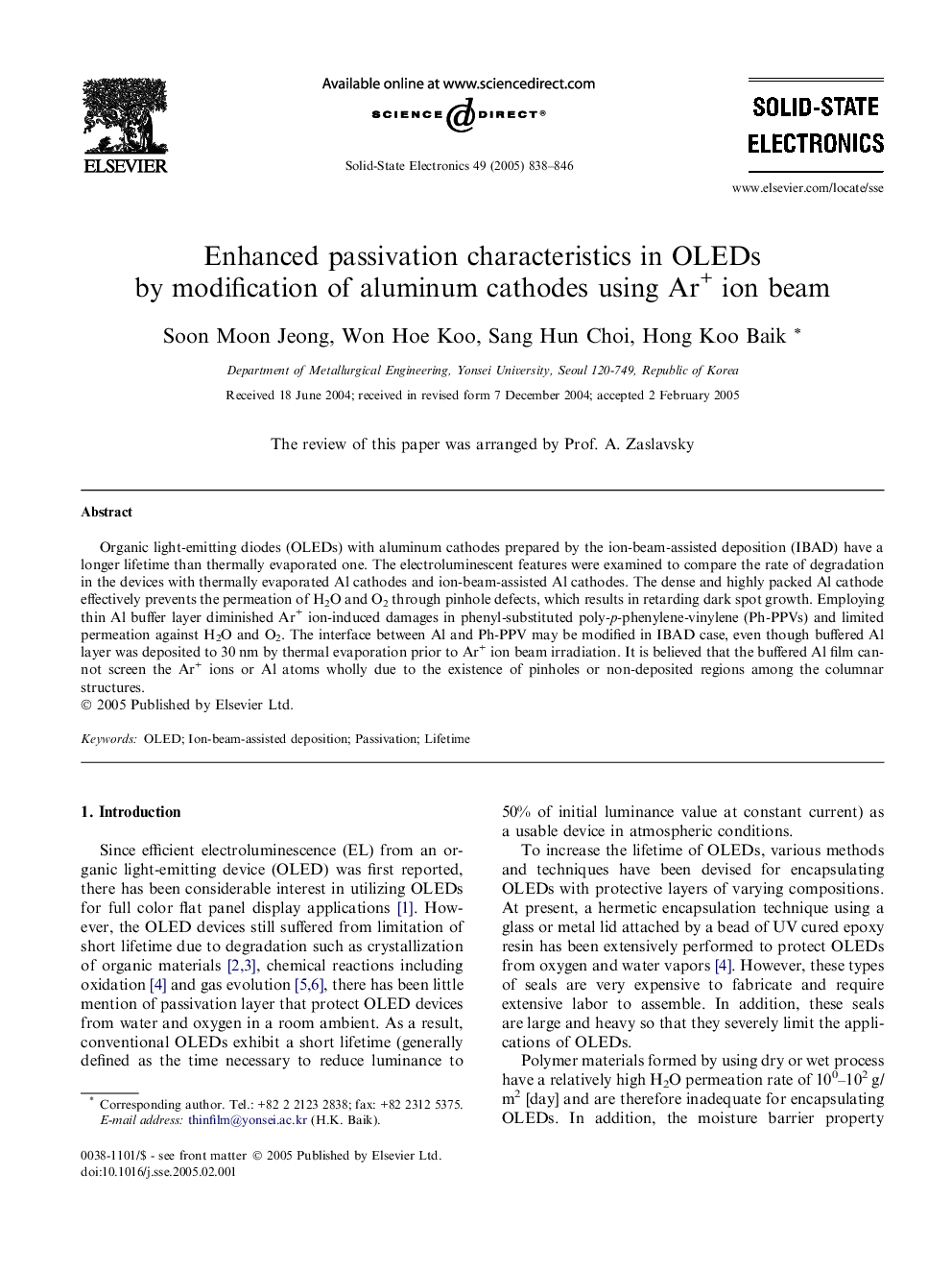| Article ID | Journal | Published Year | Pages | File Type |
|---|---|---|---|---|
| 10411187 | Solid-State Electronics | 2005 | 9 Pages |
Abstract
Organic light-emitting diodes (OLEDs) with aluminum cathodes prepared by the ion-beam-assisted deposition (IBAD) have a longer lifetime than thermally evaporated one. The electroluminescent features were examined to compare the rate of degradation in the devices with thermally evaporated Al cathodes and ion-beam-assisted Al cathodes. The dense and highly packed Al cathode effectively prevents the permeation of H2O and O2 through pinhole defects, which results in retarding dark spot growth. Employing thin Al buffer layer diminished Ar+ ion-induced damages in phenyl-substituted poly-p-phenylene-vinylene (Ph-PPVs) and limited permeation against H2O and O2. The interface between Al and Ph-PPV may be modified in IBAD case, even though buffered Al layer was deposited to 30Â nm by thermal evaporation prior to Ar+ ion beam irradiation. It is believed that the buffered Al film cannot screen the Ar+ ions or Al atoms wholly due to the existence of pinholes or non-deposited regions among the columnar structures.
Related Topics
Physical Sciences and Engineering
Engineering
Electrical and Electronic Engineering
Authors
Soon Moon Jeong, Won Hoe Koo, Sang Hun Choi, Hong Koo Baik,
